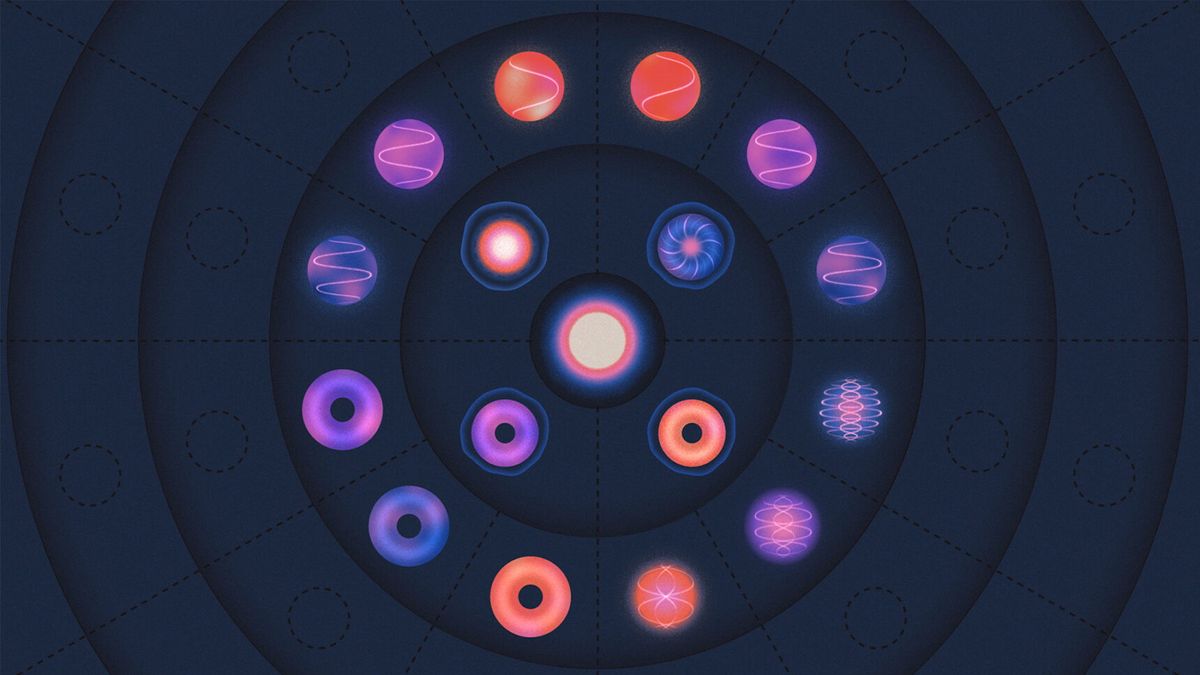What are we really made of? - Introduction to the Standard Model

👋 Hi there,
before today's read, I would love to catch your opinion on something. I have recently thought about creating more in-depth astronomy reels on my Instagram profile with personally created video files, both animated and face videos. Would you be interested in seeing something like this?
Have you ever thought about what we are really made of?
If yes, you have probably found yourself digging down a rabbit hole. We are all made out of cells, those cells are made out of molecules and the molecules are made out of atoms. Atoms themselves again are made out of more fundamental particles like protons, neutrons and electrons. Protons and Neutrons are also made from even smaller particles known as Quarks. Those Quarks are connected by something known as gluons. A proton for example is made from two up quarks and one down quark.
But what really is the most fundamental in our universe? Scientists found out that the concept of particles is not really the most fundamental there is but something known as a Quantum Field. Quantum fields can be understood as electromagnetic fields. Fluctuations in these fields can cause bundles of energy to stick together which are visible as particles.
Our best understanding of how these particles and three of the forces are all related to each other is encapsulated in the Standard Model of particle physics. Developed in the early 1970s, it successfully explained almost all experimental results and precisely predicted a wide variety of phenomena. Over time and through many experiments, the Standard Model has become established as a well-tested physics theory.
Matter Particles
As said before all matter around us is made from elementary particles, the building blocks of matter. These particles occur in two basic types called quarks and leptons. Both types of particles come in groups of six, which are related in pairs, or “generations”. The lightest and most stable particles make up the first generation, whereas the heavier and less-stable particles belong to the second and third generations. All matter in our universe is made from lighter particles of the first generation. Any heavier particles quickly decay into more stable ones. We still know about their existence because we can make these particles at huge particle colliders like the one at Cern. The six quarks are paired in three generations – the “up quark” and the “down quark” form the first generation, followed by the “charm quark” and “strange quark”, then the “top quark” and “bottom (or beauty) quark”. Furthermore, the six leptons are arranged in a similar way. They also come in three generations -the “electron” and the “electron neutrino”, the “muon” and the “muon neutrino”, and the “tau” and the “tau neutrino”. The electron, the muon and the tau all have an electric charge and a measurable or sizeable mass, whereas the neutrinos are electrically neutral and have a non-significant amount of mass.
As we can see matter the way it is in our universe is made up of several different particles and their associated fields. For a reason we do not understand today nature made these different types of “generations” which are not really stable but quickly decay, as described above. This will leave one of the most mystique questions of theoretical physics and our current understanding of the world around us.
If you have enjoyed this episode of the Sunday Night Sky why not consider subscribing so you do not miss any future content? Furthermore, I will talk in more detail about the forces and carrier particles of the Standard Model in next week's episode coming out on the 13th of November, so why not share this Newsletter so that other people also can learn more about our fascinating universe?
Thanks again and I'll see you soon.
xoxo
Victor 👋 :) (@observethecosmos)
🎥 Youtube Video
Beyond Polynomials, a deep dive into NEWTON's Method
🎟 Want to advertise on The Sunday Night Sky? → Send an E-Mail
Check out some of my social media pages to learn more about math, science and astronomy:
🎬:Youtube